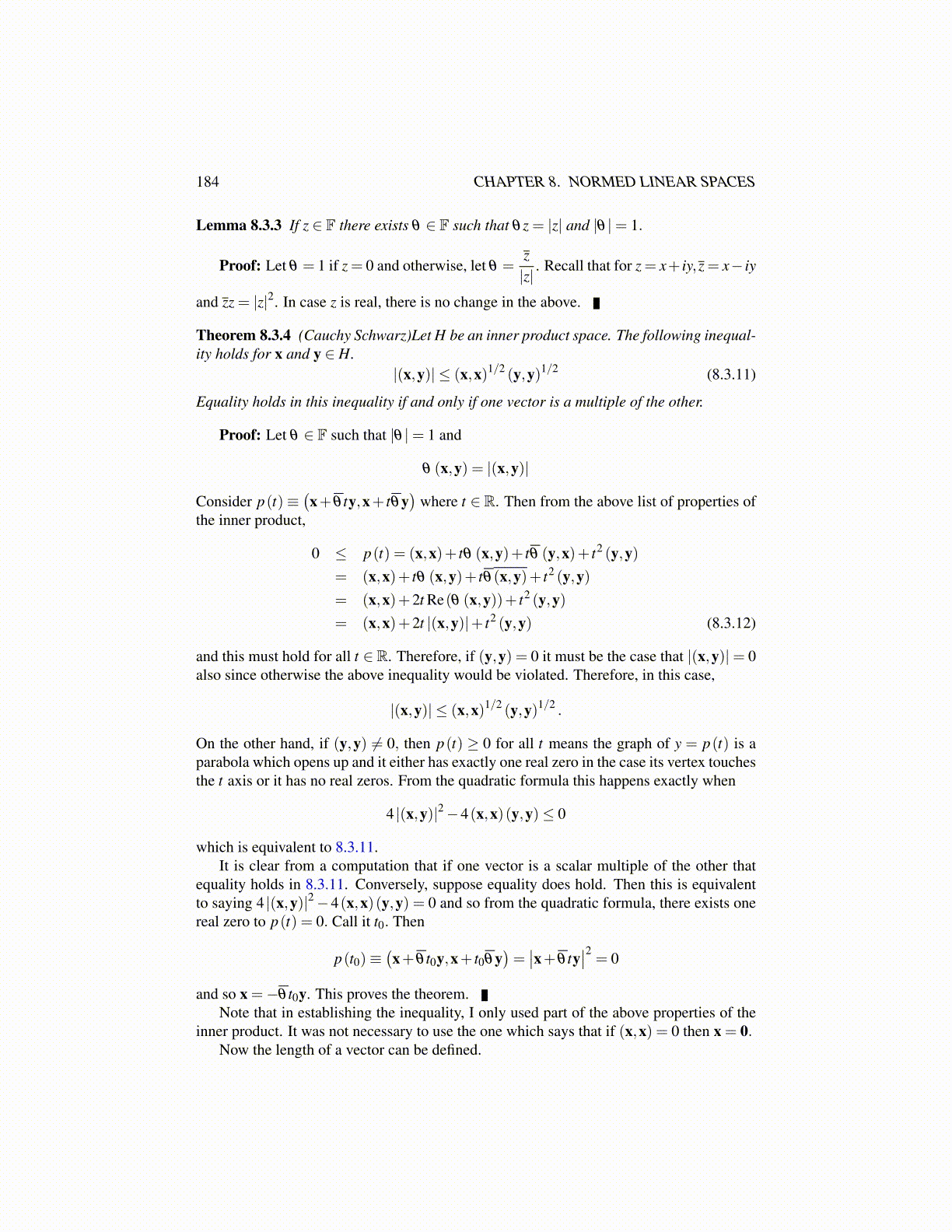
184 CHAPTER 8. NORMED LINEAR SPACES
Lemma 8.3.3 If z ∈ F there exists θ ∈ F such that θz = |z| and |θ |= 1.
Proof: Let θ = 1 if z = 0 and otherwise, let θ =z|z|
. Recall that for z = x+ iy,z = x− iy
and zz = |z|2. In case z is real, there is no change in the above.
Theorem 8.3.4 (Cauchy Schwarz)Let H be an inner product space. The following inequal-ity holds for x and y ∈ H.
|(x,y)| ≤ (x,x)1/2 (y,y)1/2 (8.3.11)
Equality holds in this inequality if and only if one vector is a multiple of the other.
Proof: Let θ ∈ F such that |θ |= 1 and
θ (x,y) = |(x,y)|
Consider p(t)≡(x+θ ty,x+ tθy
)where t ∈ R. Then from the above list of properties of
the inner product,
0 ≤ p(t) = (x,x)+ tθ (x,y)+ tθ (y,x)+ t2 (y,y)= (x,x)+ tθ (x,y)+ tθ(x,y)+ t2 (y,y)= (x,x)+2t Re(θ (x,y))+ t2 (y,y)= (x,x)+2t |(x,y)|+ t2 (y,y) (8.3.12)
and this must hold for all t ∈R. Therefore, if (y,y) = 0 it must be the case that |(x,y)|= 0also since otherwise the above inequality would be violated. Therefore, in this case,
|(x,y)| ≤ (x,x)1/2 (y,y)1/2 .
On the other hand, if (y,y) ̸= 0, then p(t) ≥ 0 for all t means the graph of y = p(t) is aparabola which opens up and it either has exactly one real zero in the case its vertex touchesthe t axis or it has no real zeros. From the quadratic formula this happens exactly when
4 |(x,y)|2−4(x,x)(y,y)≤ 0
which is equivalent to 8.3.11.It is clear from a computation that if one vector is a scalar multiple of the other that
equality holds in 8.3.11. Conversely, suppose equality does hold. Then this is equivalentto saying 4 |(x,y)|2−4(x,x)(y,y) = 0 and so from the quadratic formula, there exists onereal zero to p(t) = 0. Call it t0. Then
p(t0)≡(x+θ t0y,x+ t0θy
)=∣∣x+θ ty
∣∣2 = 0
and so x =−θ t0y. This proves the theorem.Note that in establishing the inequality, I only used part of the above properties of the
inner product. It was not necessary to use the one which says that if (x,x) = 0 then x = 0.Now the length of a vector can be defined.